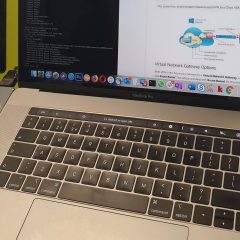ENE-NG and GNS3 – Speed and Duplex Mismatch
Duplex Mismatch KB ID 0000983 Problem I don’t know why this happens sometimes with GNS3, and EVE-NG but occasionally I will get a connection between two devices that constantly complains. %CDP-4-DUPLEX_MISMATCH: duplex mismatch discovered on {interface-name} (not half duplex), with {host-name} {interface-name} (half duplex). For the uninitiated, a speed/duplex mismatch, usually happens when both ends of the link are set...
EVE-NG: Create Windows Server 2019 VM
KB ID Article Problem I’ve had a Windows 2012R2 server image that I’ve ben using in EVE-NG for ever. This week it bit the dust so I thought, can I deploy a shiny new 2019 server? EVE-NG Windows Virtual Machines Yes! In fact the deployment procedure is the same for 2019 as it was for earlier versions of Windows server. First log onto your EVE-NG host and create the folder; mkdir /opt/unetlab/addons/qemu/winserver-2019/...
EVE-NG Deploying Fortigate v6 Firewalls
KB ID 0001714 Problem The firm I work for are looking at a replacement for Cisco ASA as their preferred firewall of choice. We are looking at Fortinet to fill this gap, but as a product/solution it’s something I know very little about. So the best way to learn is to deploy and play with, and the test bench weapon of choice for discerning technical types is EVE-NG. So can I deploy the newest (v6.4.2 at time of writing) Fortigate...
EVE-NG Deploying F5 BIG-IP
KB ID 0001696 Problem I already had some F5 Images in my EVE-NG, but I wanted to run version 16.x. However, I didn’t think that was officially supported, so I thought I would try and get it running anyway! Solution Theres no need to scour the internet for ‘dodgy’ versions, F5 will quite happily give you the latest version, just sign up for a free account, and you can download the image. While you are there, you can...
TinyCore Linux: Build a ‘Persistent’ Web Server
KB ID 0001697 Problem Recently I was building a lab for testing load balancing, and needed some web servers, I could have built three Windows servers, but I wanted to run them in EVE-NG, so they had to be as light as I could make them. I chose TinyCore Linux, (I know there are smaller options, but it’s light enough for me to run, and work with). The problem occurs when you reboot the TinyCore host, it (by default) reverts back...




